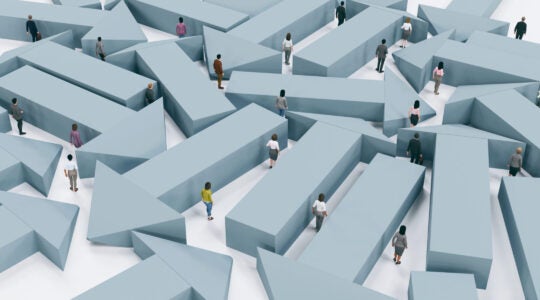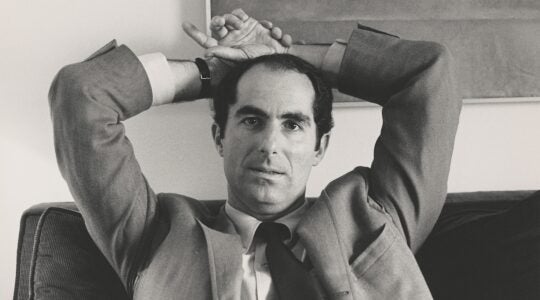When Bill Clinton was President of the United States, many in Israel thought he would most fit to be their Prime Minister. In 2012 we watched the high involvement of Israeli Prime Minister Benjamin Netanyahu in the Republican presidential campaign, and for a moment it looked like he would be a more suitable candidate than Mitt Romney.
Ostensibly, the American two-party system looks very different from the Israeli system, with more than 30 parties running in the Jan. 22 national elections. But on closer inspection, it is apparent that all of those Israeli parties can be categorized in four main political camps. Each of these camps features crucial socio-demographic and ideological common denominators, beyond inter-party differences. Simplification may add insight on the nature of Israeli political process.
First, it is easy to identify common ground among parties mainly catering to Arab voters (communist Hadash, Islamic United Arab List, and anti-Israeli Balad), despite the conflicts that prevent them from featuring one common list. None of these parties ever was a full partner in Israeli governments. At most, the three will jointly be considered when it comes to build a bloc to prevent the feasibility of a right-wing government.
Second, the camp of ultra-Orthodox voters (Shas and United Torah Judaism) share important common denominators: exclusively male candidates, sharp inside differences with a facade of unity, willingness to serve in any coalition provided it offers supporting the education and housing interests of their constituents (as the leaders of these parties assess them).
Third, one identifies a political camp sharing national-liberal and national-religious political guidelines: Likud and Israel Beiteinu (before and after the merger of their lists), the National Religious Party (now Habayt Hayehudi, or The Jewish Home), and nationalist movements of the Jewish Right (previously running separate lists and now merged with Habayt Hayehudi, plus possible seats with Otzmah Leisrael). The common denominator of all these is a strategic preference for Israel’s territorial option over the promotion of negotiations with the Palestinians, which should trade territorial concessions for political agreement. All of these can be labeled Israel’s “Republican” party although there is some inner variance. But consider that the U.S. Republicans themselves range between moderate conservative views through the “Tea Party”.
Fourth, and naturally under a label of Israel’s “Democratic” party, we can bind the center-left (Labor Party and Meretz) as well as all the parties and splinter factions of the center – a third force that periodically emerged under different brands in Israel, rose, and sometimes disappeared. Labor’s role, after it lost the policy hegemony it held before Israel’s statehood and during the state’s first three decades, was somewhat relegated to checking right-wing “Republican” coalitions from outside the government, or occasionally calibrating them from the inside. Since the 1990s it was the center that largely replaced the center-left as the leading “Democrat” force, while the left in turn tended to become more center. Currently, Israel’s split center comprises Tzipi Livni’s Hatenuah, Yair Lapid’s Yesh Atid, Shaul Mofaz’s Kadima (largest party in the outgoing Knesset and now probably will not win any seats in the next one), and possibly also Rabbi Amsalem’s Am Shalem.
Reduction into four camps does not do justice to the complexity of Israel’s public discourse, which simultaneously debates different items not necessarily dependent on each other – such as security and foreign affairs; religion, state and civil society; the economy and social justice. Parties tend to pick up different blends of stances regarding each of these issues, so their numbers increase. However, it is interesting to look at election results over the last 20 years through this compact, fourfold party format.
Historical perspective (see chart, with all the results from 1992 to 2009 and within quotes forecasts for 2013 based on the latest polls) reveals surprising stability in the balance of ting preferences (which already emerged in the 1980s), together with periodic alternation of the leading role between the two main political camps. Transfer of power between the Likud-led “Republican” coalition and the “Democrat” coalition headed by the Labor Party (historically declining) and the center (on the rise), occurred almost on every election. Thus, after Yitzhak Rabin (“Democrat”) in 1992, came Benjamin Netanyahu (“Republican”) in 1996, Ehud Barak (“Democrat”) in 1999, Ariel Sharon (elected as “Republican” and converted to “Democrat”) in 2003, Ehud Olmert (“Democrat”) in 2006, and again Bibi (“Republican”) in 2009.
Election after election, leaders substituted leaders but the long-term basic tie between the two main camps remained. Both smaller political camps, the ultra-Orthodox and the Arabs, slowly and endlessly gained power over time. For both, the percentage of voters on elections day played a significant role.
According to the most recent surveys (Dec. 28), it is a close call but the “Democrats” are not headed toward a new shift of power. Rather, their persisting split is ostensibly unprofitable. On January 22, the “Republicans” and the ultra-Orthodox together, with Likud-Beitenu by far the largest party, seem headed again toward securing a fair majority, enough to allow them to renew their coalition government. The “Democrats” together with the Arabs are in the minority and seem to be guaranteed another four years of opposition. Some possible coalition cosmetics will not make a difference.
The impression is that the upcoming election will not mean big political change in Israel.
The author is professor emeritus at the Hebrew University of Jerusalem.
The New York Jewish Week brings you the stories behind the headlines, keeping you connected to Jewish life in New York. Help sustain the reporting you trust by donating today.




